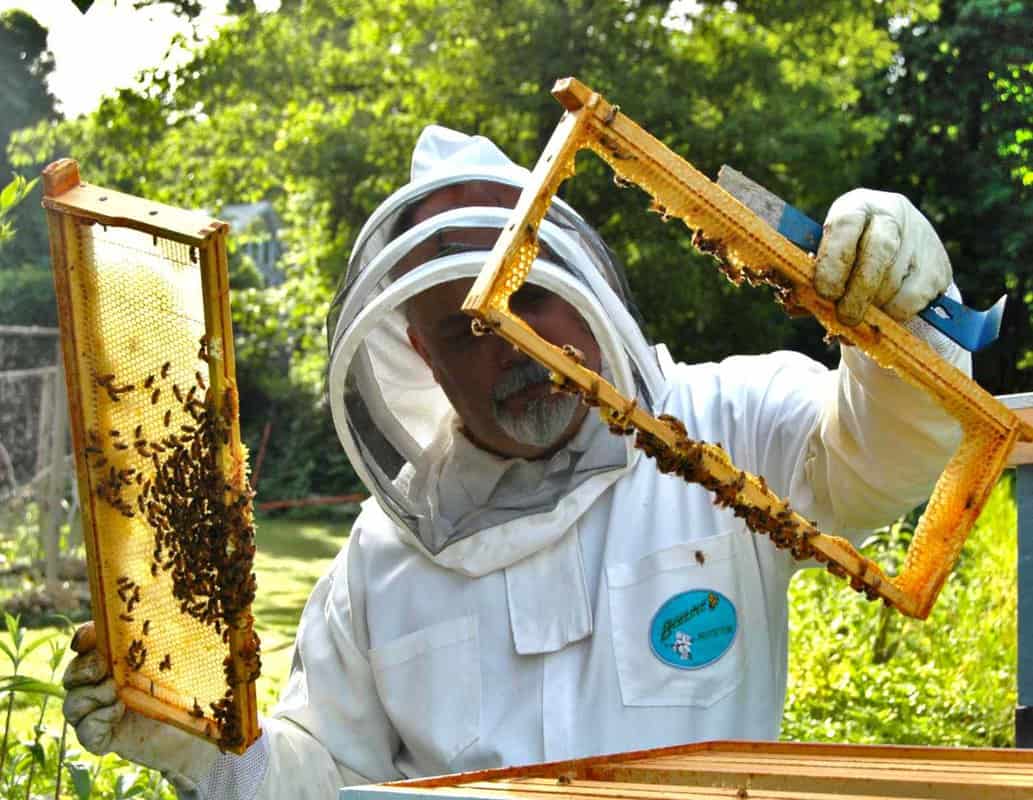Did you know that you can harvest delicious honey from your own hive? For those who have an interest in beekeeping, you can tap into the natural sweetness of honey in a hive, and harvest it yourself. This article will cover how to get started with beekeeping and how to successfully harvest the honey from your hive. You will learn the equipment needed, the best practices for harvesting the honey, and how to store it once you’ve collected it. With the right knowledge, you can have a delicious and sustainable source of honey from your own backyard.
What is Honey?
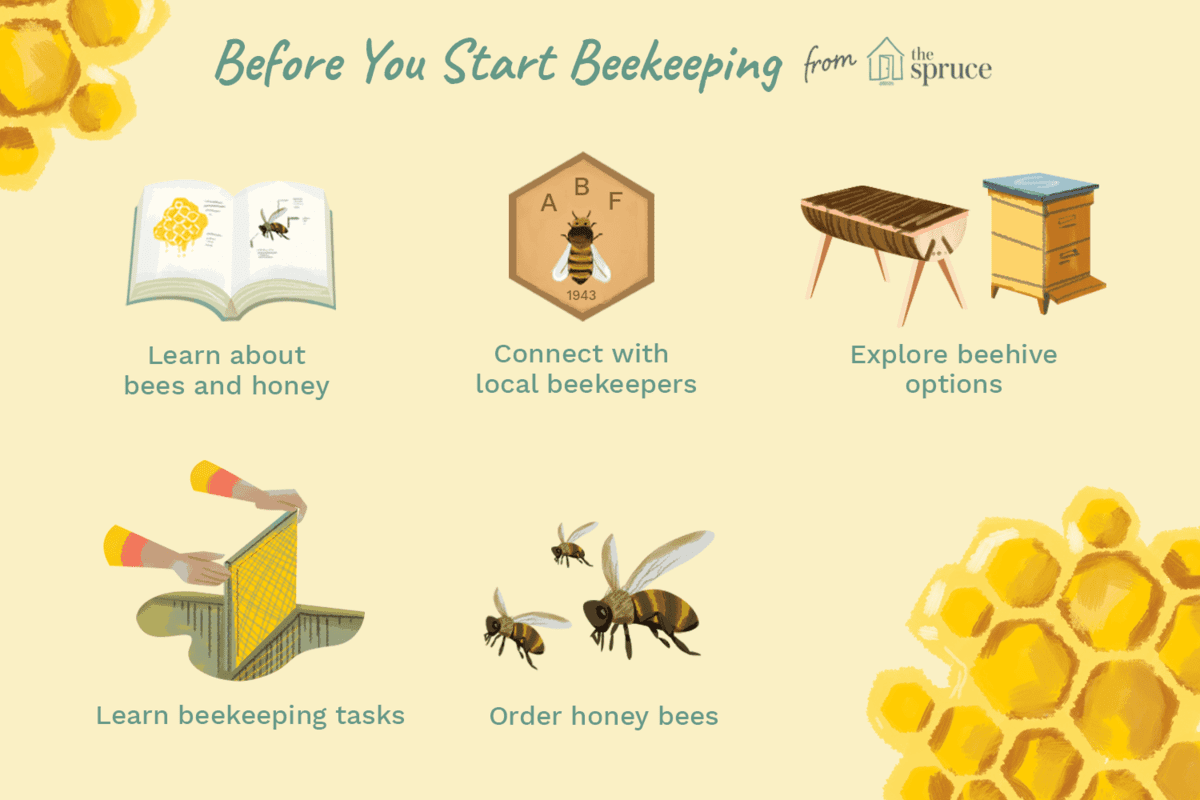
Honey is a sweet, viscous food substance made by honey bees and some other insects. The bees collect the nectar from flowers and store it in their honeycombs. The nectar is then converted into honey by the bees. Honey is composed of sugars, minerals, vitamins, and enzymes. When the honey is collected from the hive, it is filtered and stored in containers.
Honey in the Hive
In the hive, honey is stored in the cells of wax combs. The bees use the honey for food, and it is also used by the colony to feed their young. As the honey is stored, it is broken down into glucose and fructose, and the bees add enzymes to it to make it more digestible. The honey is also preserved by the bees by adding a protective wax cap to the cells.
| Component | Percentage |
|---|---|
| Fructose | 38.2% |
| Glucose | 31.3% |
| Water | 17.1% |
| Minerals | 1.5% |
| Vitamins | 0.5% |
| Proteins/Amino Acids | 0.3% |
| Enzymes | 0.2% |
The composition of honey varies depending on the type of flower nectar the bees have used to make it. However, the typical composition of honey is shown in the table above.
What is a Hive?
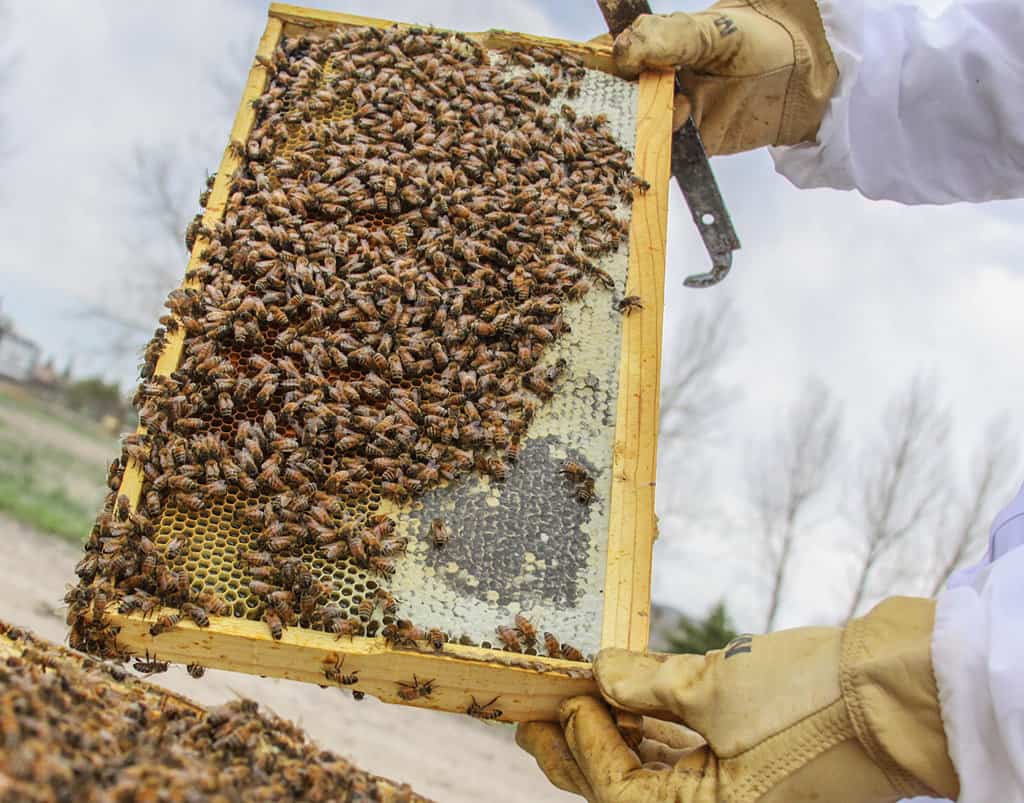
A hive is a box-like structure with multiple frames in which honeybees build their homes and store honey. It is typically made of wood or wood-like material and has an opening for the bees to enter and exit. The frames provide a space for the bees to create honeycomb and store honey, pollen, and wax, as well as pollen and larvae. Hives can come in different sizes and shapes, but the most common is a Langstroth hive, which consists of a bottom board, deep hive body, medium hive body, and shallow super. The honey in a hive is created when bees collect nectar from flowers, which they store in the honeycomb. The honey is then sealed and stored until it is ready to be harvested.
| Hive Type | Components |
|---|---|
| Langstroth | Bottom board, deep hive body, medium hive body, shallow super |
| Top Bar | Top bar hive body, top bars, follower boards |
| Warre | Warre hive body, quilt box, follower boards |
The Benefits of Keeping Bees
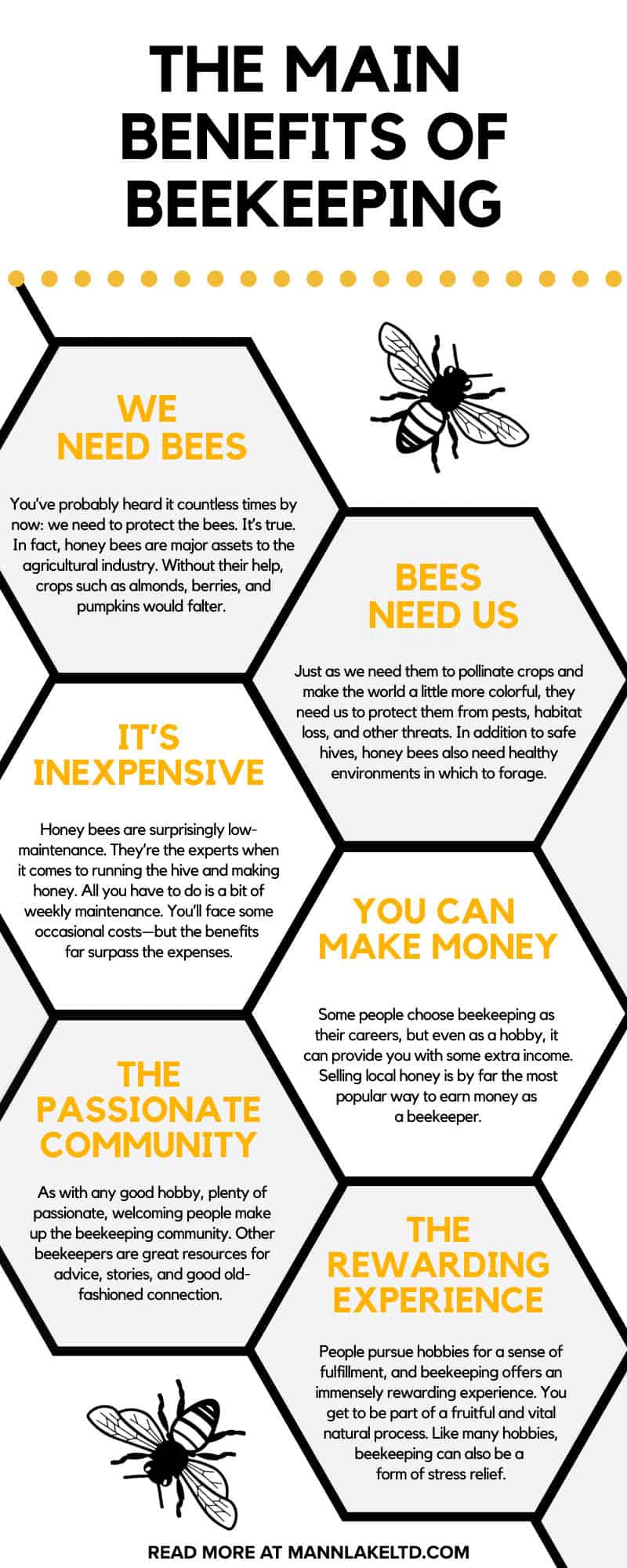
- Harvesting honey – Beekeeping is a great way to harvest your own honey and other products from the hive.
- Pollination – Bees are essential for pollination of many crops, providing a natural and efficient way to increase crop yields.
- Sustainability – Beekeeping is a sustainable practice that helps to protect wild bee populations.
- Health benefits – Honey is known to have numerous health benefits and can be used to treat a variety of conditions.
- Educational opportunity – Beekeeping provides an opportunity to learn about the biology and behavior of bees.
- Sense of accomplishment – There is a great sense of accomplishment that comes with successfully managing a bee hive and harvesting honey.
How to Construct a Hive
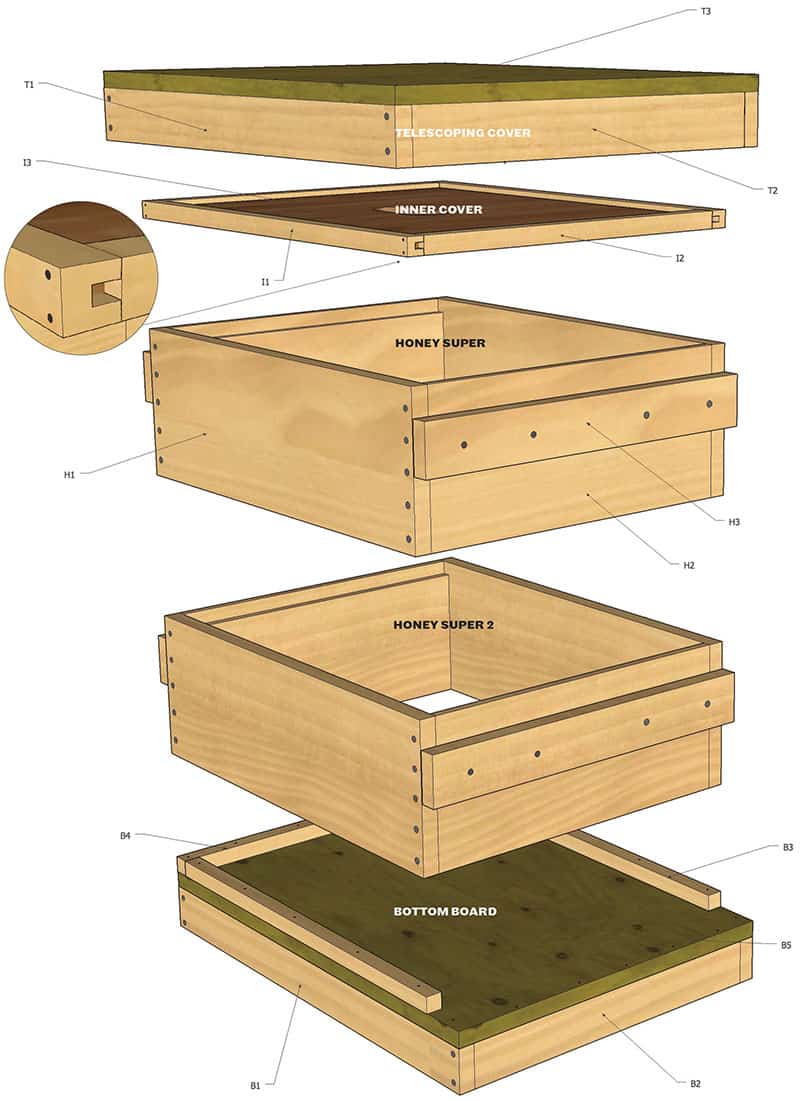
Materials Needed:
| Material | Quantity |
|---|---|
| Hive body | 1 |
| Frames | 10 |
| Foundation | 10 |
| Inner cover | 1 |
| Outer cover | 1 |
Steps:
- Assemble the frames. Insert the foundation into the grooves on each side of the frame and secure with nails.
- Place the frames into the hive body. Arrange the frames so that they are evenly spaced and the ends of the frames are flush with the ends of the hive body.
- Place the inner cover onto the top of the hive body and secure with nails.
- Place the outer cover onto the top of the hive body and secure with nails.
- Your hive is now ready for use!
Installing a Bee Colony

Before installing a bee colony, make sure to have all the necessary equipment and supplies. This includes a bee smoker, beekeeping suit, hive tool, bee brush, bee feeder, and bee hive. Once all supplies are gathered, the bee colony can be installed.
Start by removing the hive body and frames from the box they are shipped in. Place the frames in the hive body, then insert the inner and outer covers.
Smoke the bees before transferring them to the hive. This will calm them and make them less aggressive. Place the bee package in front of the hive entrance and open it. Shake the package so that most of the bees enter the hive. Place the box away from the hive, as some bees may still be in it.
Once the bees are in the hive, place the frames in the hive body. Install the entrance reducer to prevent robbers from entering the hive. Place the hive in its permanent location, making sure it is facing south or southeast for maximum sun exposure.
To help the bees adjust to their new home, provide them with sugar syrup in a feeder. Add a few more frames if needed, and make sure to check on the hive weekly.
Finally, keep an eye out for swarming. Swarming is the process of the bees creating a new colony, and it is essential to watch for this in order to avoid losing the hive. If swarming is observed, split the hive into two separate hives to prevent the bees from leaving.
Maintaining a Bee Colony
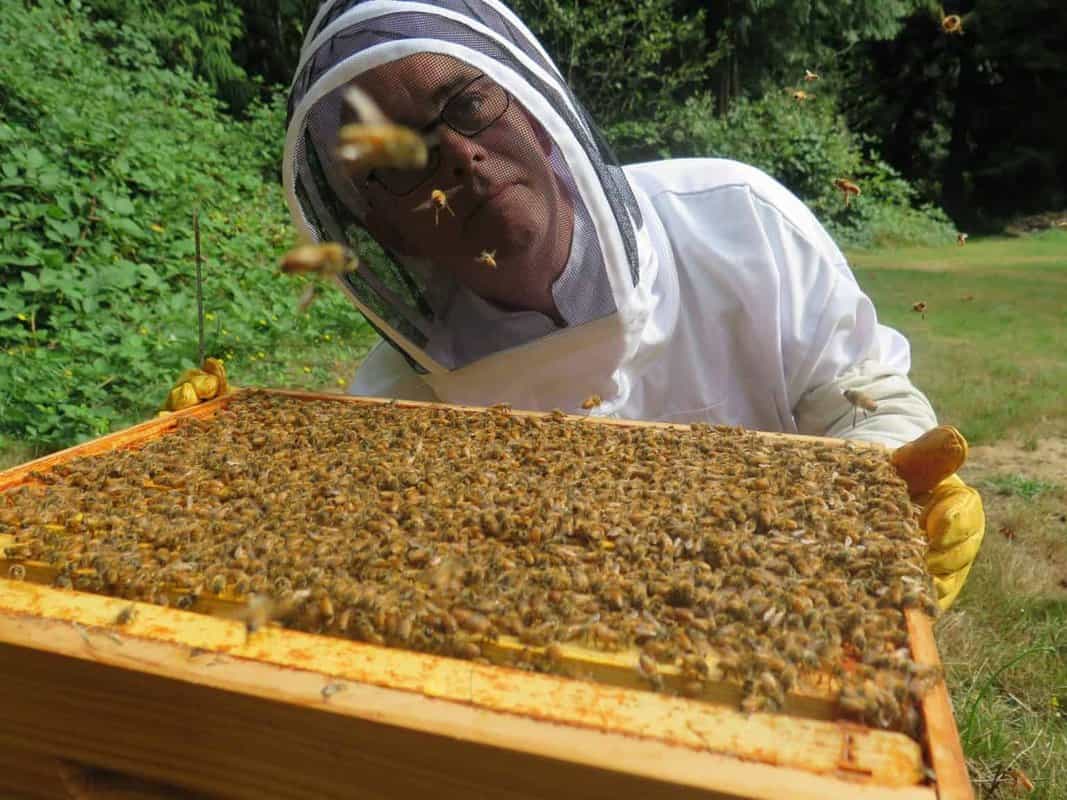
| Activity | Description |
|---|---|
| Inspection | Regularly inspect the hive to ensure it is healthy and functioning properly. Check for signs of disease, pests, and overcrowding. |
| Feeding | In areas with nectar shortages, supplement the hive’s diet with sugar water or pollen substitute. |
| Pest Control | Monitor for pests such as mites, wax moths, and ants and treat the hive accordingly. |
| Hive Management | Manage the hive by adding and removing frames, boxes, and supers as needed. |
| Harvesting Honey | Harvest the honey by extracting it from the combs. |
Maintaining a bee colony requires a commitment of time and energy. It is important to monitor the health of the hive, manage the hive, and harvest the honey. These activities include inspecting, feeding, pest control, hive management, and harvesting honey. Through regular inspections, beekeepers can assess the general health of the hive and identify any potential problems. Feeding bee colonies in areas with nectar shortages will help ensure the bees have enough food. Beekeepers must also monitor for pests such as mites, wax moths, and ants and treat the hive accordingly. Hive management activities include adding and removing frames, boxes, and supers as needed. Finally, beekeepers must harvest the honey by extracting it from the combs.
Honey in the Hive
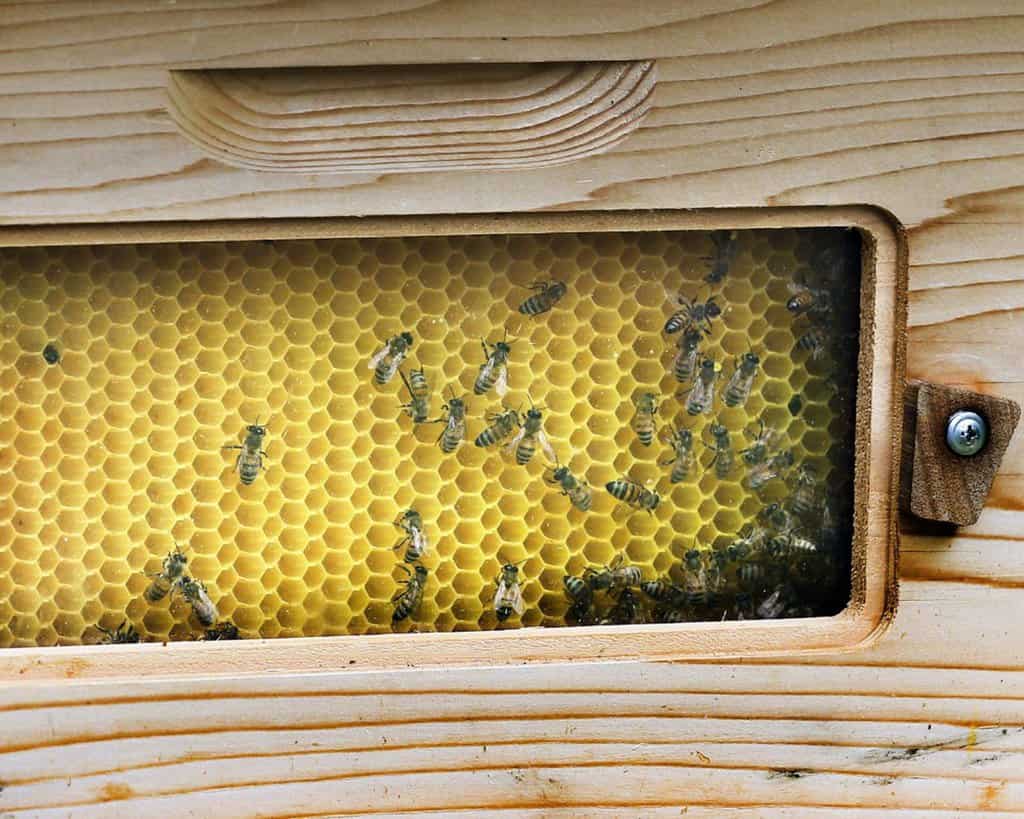
- Honey is made by bees. Bees collect nectar from flowers and use enzymes to convert it into honey. Honey is stored in the honeycomb of the hive and is used as a food source for the colony.
- Honey is a natural preservative. It contains low amounts of moisture, which prevents microbes from growing in it. This makes it a great food source for the bees and a great preservative for humans.
- Honey has many health benefits. It is rich in antioxidants and can help boost the immune system. It can also help reduce inflammation and help with digestion.
- Honey can be harvested from a beehive. Beekeepers harvest honey from their hives by using a bee brush to remove the honeycomb from the hive. The honeycomb is then placed in a honey extractor to extract the honey from the comb.
- Honey can be used in many recipes. It is a great addition to many dishes and desserts, and can be used to sweeten drinks and teas. Honey can also be used as a natural sweetener in many recipes.
Harvesting Honey
Harvesting honey is one of the most rewarding parts of beekeeping. To get started, you will need to make sure your hive is healthy and ready for harvest. Here are the steps to harvesting honey from your own hive:
- Check the honey frames. You can tell if the honey is ready to harvest if the frames are mostly filled with capped honey.
- Remove the frames of honey from the hive and take them to a clean place to harvest.
- Uncap the honey with an uncapping knife.
- Spin the frames in an extractor to get the honey out.
- Strain the honey to remove any wax or debris.
- Pour the honey into jars and seal them.
- Return the frames to the hive to be refilled with honey.
When done correctly, harvesting honey is an easy process that will yield delicious rewards. Be sure to be gentle with the bees and frames to ensure a successful harvest. With patience and practice, you can harvest delicious honey from your own hive!
Frequently Asked Questions
How Much Space Do I Need to Keep a Beehive?
Beehives require approximately four square feet (1.2m2) of space for a single hive, with more space needed for additional hives. The hive should be placed in a sheltered area that is well-drained and away from any sources of noise or vibration, such as busy roads or large machinery. If space permits, it is recommended to keep hives at least three metres apart to allow bees enough room to move between them.
What kind of hive should I use for beekeeping?
Langstroth Hive: A Langstroth hive is the most common type of beehive and works by vertically stacking boxes of different sizes. The boxes are equipped with frames that make beekeeping easier. It is the most popular choice among beekeepers due to its versatility and the ease of management.
Top Bar Hive: A top bar hive is a horizontal hive with frames that are suspended from a top bar. This type of hive is less expensive than a Langstroth hive, and is often seen as simpler to manage. However, it is less versatile and more difficult to inspect.
Warre Hive: A Warre hive is similar to a top bar hive, but the frames are stacked vertically instead of horizontally. It is considered a more natural form of beekeeping, as it is designed to mimic the structure of a wild hive.
Flow Hive: A Flow Hive is a type of Langstroth hive that has frames that are designed to be used with a special honey harvesting system. This system allows for the honey to be harvested without opening or disturbing the hive. The Flow Hive is a great option for those looking for an easier way to collect honey.
How often should I harvest honey?
Harvesting honey should be done every 2-3 months while the hive is actively producing. If the hive is in a long flow of nectar, you can wait up to 4 months. If the hive is short of food, you should harvest earlier. The amount of honey harvested will depend on the size of the hive and the amount of honey stored in the combs. It is best to leave the bees with at least 60-80 pounds of honey for the winter.
What are the Safety Precautions I Need to Take When Harvesting Honey?
- Wear protective gear. Make sure to wear protective clothing when harvesting honey, such as a bee suit, gloves, and a hat. Avoid wearing bright colors that may attract bees.
- Keep calm. When handling bees, stay calm and move slowly. Quick movements and loud noises can startle the bees and cause them to sting.
- Work in a well-lit area. Harvesting honey can be a delicate process. Working in a well-lit area will help you to see the hive and any bees that may be nearby.
- Check for bee activity. Before harvesting the honey, look for bee activity in and around the hive. If there are bees present, wait until they have left before proceeding.
- Use a bee smoker. A bee smoker is a handheld device that produces smoke, which can help to keep the bees calm and reduce the likelihood of stings.
- Keep a bee brush handy. A bee brush can be used to gently move bees away from the hive during harvesting. It is also useful for removing bee debris from the harvested honey.
- Work with a partner. If possible, have a partner help you with the harvesting process. This will allow you to better monitor the activity of the bees and reduce the risk of being stung.
What other products can I get from a beehive?
- Beeswax: Beeswax is the wax secreted from the glands of bees to form the honeycomb. It is used in a variety of products such as candles, cosmetics, and even furniture polish. It can also be used for making home remedies for a variety of ailments.
- Propolis: Propolis is a sticky substance created by bees to protect the hive from disease and parasites. It is believed to have antiseptic, antifungal, and antiviral properties, and is used in herbal medicine. It is also used to make varnishes, adhesives, and cosmetics.
- Royal Jelly: Royal Jelly is a nutritious substance secreted by worker bees to feed the queen bee. It is packed with proteins, vitamins, and minerals, and is believed to have medicinal properties. It can be used as a dietary supplement or as an ingredient in cosmetics, soaps, and lotions.
- Bee Venom: Bee venom is harvested from bees and used in traditional Chinese medicine and homeopathy. It is believed to have anti-inflammatory and pain-relieving properties, and is used to treat a variety of conditions. It is also used in topical creams and ointments for the treatment of skin conditions.
Conclusion
Beekeeping is a rewarding and enjoyable hobby that can be done in any size backyard. With proper preparation, the right equipment and knowledge, you can easily harvest delicious honey from your very own hive. Even if you’re just starting out, you can create an enjoyable and sustainable beekeeping environment to ensure a steady supply of honey for the future.
